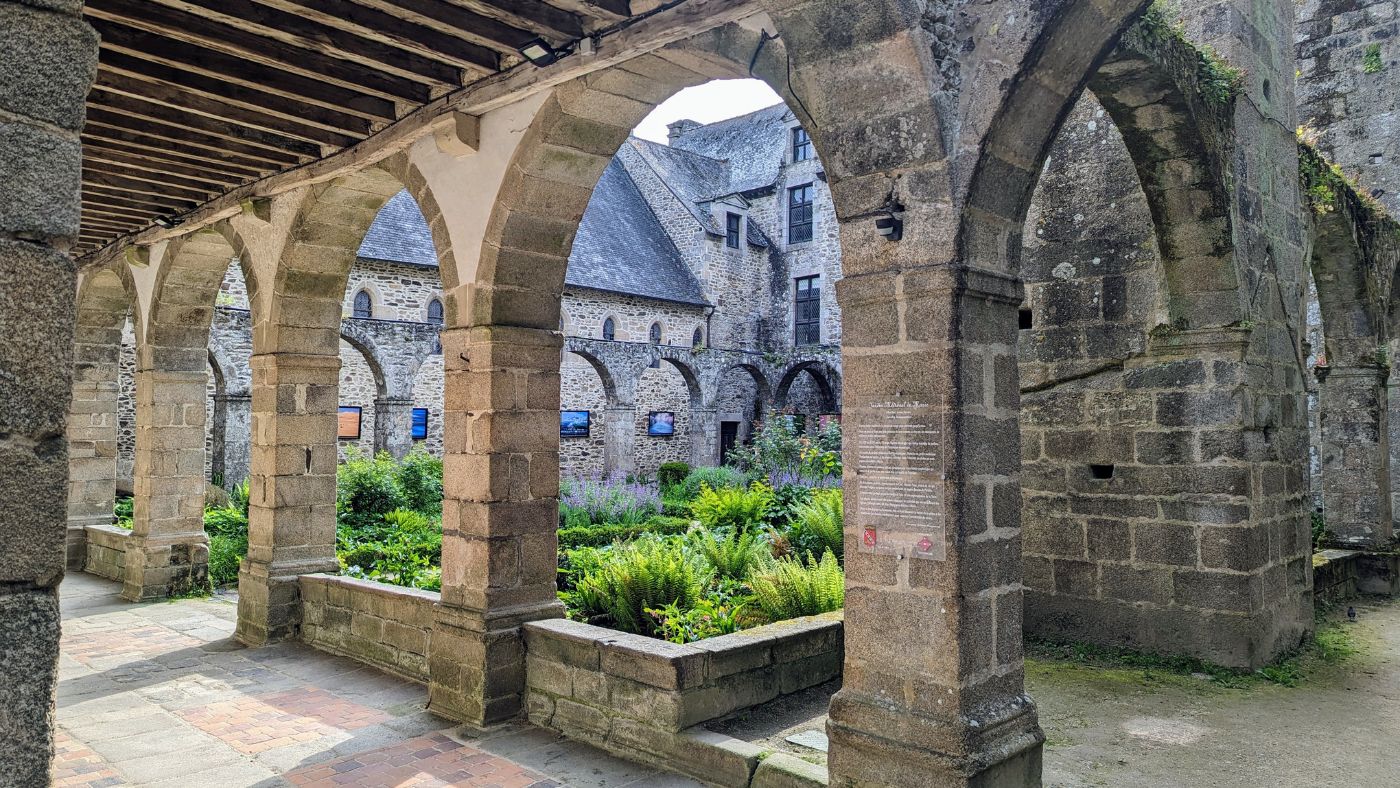Two primary destinations draw tourists from all walks of life to Normandy: the magical tide-engulfed island of Mont Saint-Michel and the hallowed grounds of the D-Day beaches. The allure of these coastal and storied Normandy sites is easy to grasp. Yet right next door, to the map, looker’s left, lies the region of Brittany, fingering west into the Atlantic beyond the reach of any other coastline in France.
We visit both on Bicycling Brittany and Normandy Plus! Bayeux and the D-Day Beaches and each has its own appeal. In spring 2023, our very own Travel Planning Specialist Nadine Dirksen, along with her husband Nathan Howard and EP’s social media specialist and occasional tour photographer Marina Neal, departed on the 11-day journey throughout coastal northern France. They began in Brittany’s Saint-Malo, a stunning port city with a vibrant pirate history, and ended in the Norman town of Bayeux, near to the D-Day beaches and location of a 70-foot embroidered tapestry depicting the Norman Conquest of England in 1066.
Boasting ancient megaliths, oysters, galettes, crepes, and quiet roads, Brittany offers un-crowded ease, a rich landscape, and a culture, language and history unique to all of France. Brittany in spring is layered by a spectrum and intensity of green foliage that reminds one of Ireland.
“Riding through this region of France was nothing short of magical,” Marina says. “We cycled through towns that felt like they came straight out of a fairy tale. We indulged in fresh oysters, fantastic cheeses, and unbelievable wine. We observed vast tides that left boats resting on the ocean floor. The place was nothing like I imagined.”
Brittany’s history and lore, which, unlike that of Normandy, is deeply tied to Celtic heritage. In fact, the name “Brittany” is derived from the Latin “Britannia,” which was the Roman name for the region inhabited by the Celts in what is now Great Britain. The Celtic people began migrating to the area that is now Brittany as early as the Neolithic age. Today you can still hear Breton (Brezhoneg), a Celtic language closely related to Cornish and Welsh, spoken throughout Brittany.
Impressive, upright standing stones called “menhirs” are further evidence of ancient Celtic activity throughout Brittany. Menhirs served various purposes that were imbued with religious or ritualistic significance, from marking burial sites, to serving as boundary markers. See the last image in the photo gallery below for a sense of scale.
Of special note beyond Brittany, one of the tour’s most memorable off-the-bike experiences is the stop at the Abbey of Hambye on Day 8. A former monastery that started in the 12th century, the abbey grew in regional prominence into the late 18th century. Following the French Revolution, the government implemented policies that led to the dissolution of religious orders and the confiscation of their properties. The monks at the abbey were expelled, and it fell into disrepair. In the 19th century, efforts were made to restore and preserve the abbey’s architectural heritage and this work continued into the 20th century.
Today, a visit to the abbey features an interactive tool that transforms the ruins into a vision from the past, and one that left an indelible impression on all EP cyclists.
“You point an iPad at the surroundings and it would show you the building in its entirety, monk choir included,” Nadine says. “It was a magical experience to walk through those beautifully kept ruins, with their floor of grass, the morning mist, the bright bird song.”
Looking back at the tour, Nadine, who is German, remarked how unexpected it was to her how much the people of Normandy value Americans. “Celebrating the Americans as their liberators is still very much alive,” she says. “When riding in Bayeux, we passed a large supermarket on the outskirts of town, which had a massive sign saying: ‘Welcome to our liberators! Specials on wine and cheese.’ While this message struck me as really funny, I did find the overall gratefulness and liveliness of history very moving.”
Ready to download the tour itinerary and start planning your trip to France? Click the button below. But before you go, view the collection of Marina’s favorite photos (below) from the May 2023 tour. You can also glimpse of tour images from across the years in the tour’s main photo album.





































